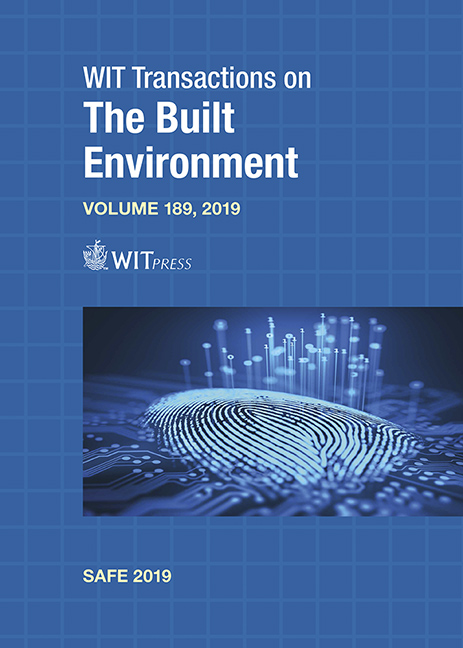DESIGN STRATEGIES FOR THE DEVELOPMENT OF LIFE-SAVING FURNITURE SYSTEMS IN THE EVENT OF AN EARTHQUAKE
Price
Free (open access)
Transaction
Volume
189
Pages
11
Page Range
67 - 77
Published
2019
Paper DOI
10.2495/SAFE190071
Copyright
WIT Press
Author(s)
DANIELE GALLOPPO, JACOPO MASCITTI, LUCIA PIETRONI
Abstract
During an earthquake, non-structural elements, such as mobile systems, furniture and equipment that set up environments, can either become obstacles and barriers that aggravate dangerous conditions – especially for the elderly, children and those who have ambulation impairment or, on the contrary, they may represent a chance of survival in the event of collapses. This paper aims to investigate the possibilities to innovate and transform, from a structural and functional perspective, the design of furniture and mobile equipment, in intelligent safety systems that can contribute to the protection of life. In particular, the state of the art of earthquake-proof projects and products, are analyzed in a critical way both to highlight the “life-saving” implemented strategies and to bring out, at the same time, any latent needs that are not yet met but that can be developed in a future scenario. The aim of this analysis is the definition of a set of technical performance requirements, for the development of new “collaborative” life-saving concepts in the case of earthquakes. For the critical analysis of the state of the art, we carried out a series of data collection activities of patents and anti-seismic furniture products and an interdisciplinary research, concerning the health conditions and the conditions of psycho–physical stress that people undergo during a seismic event. The data collection was conducted through the analysis of the most recent scientific publications and technical sheets of existing products, and also through interviews with specific figures who were directly involved in the last seismic events that hit the centre of Italy. The paper shows the results of this research which, in turn, demonstrates how the theme of furniture design and non-structural elements for the preservation of life in the event of earthquake is current and promising; it also identifies design strategies for the development of systems of life-saving furniture, in a systemic and collaborative perspective.
Keywords
design for safety, earthquake proof furniture, furniture design





